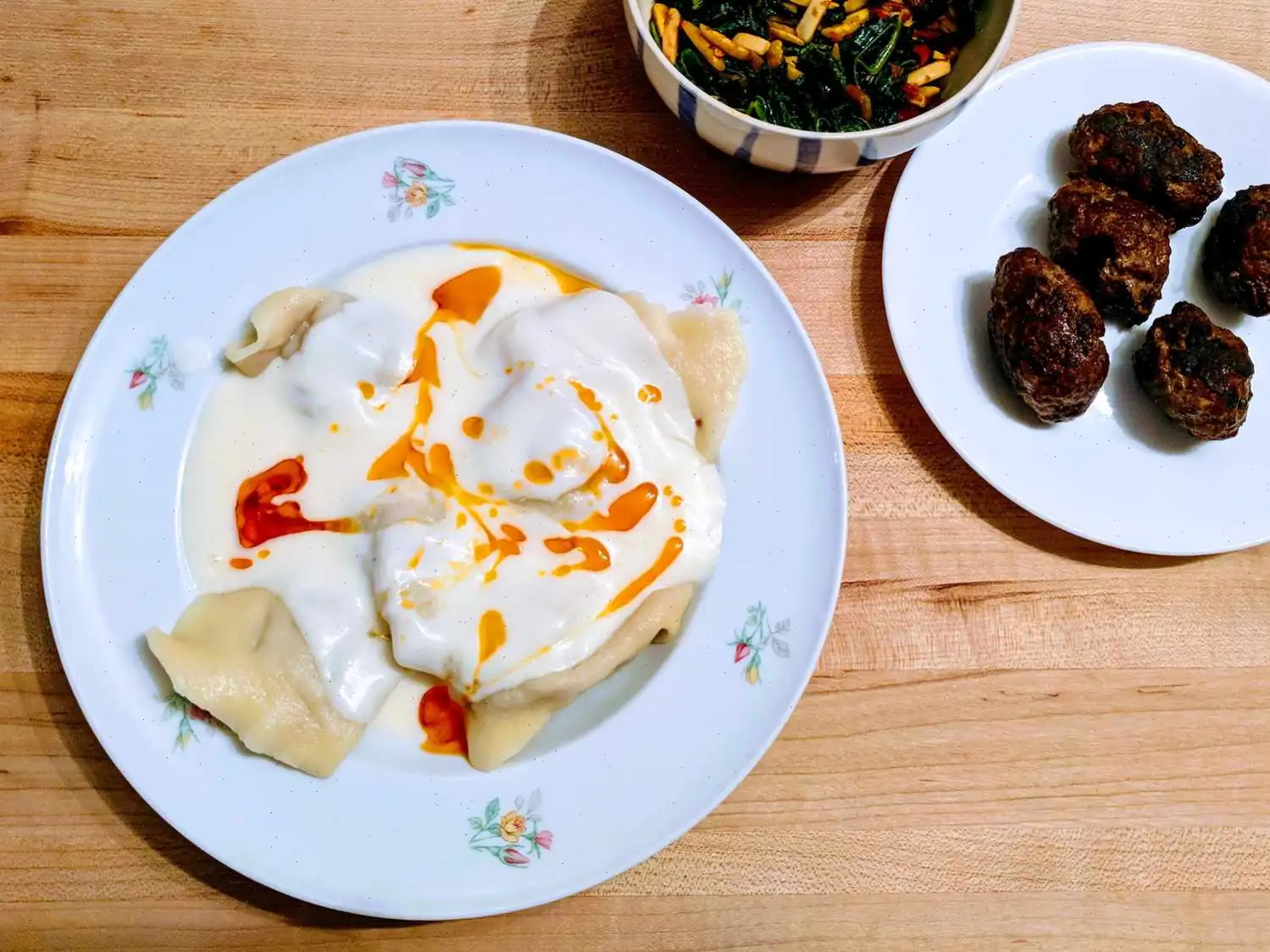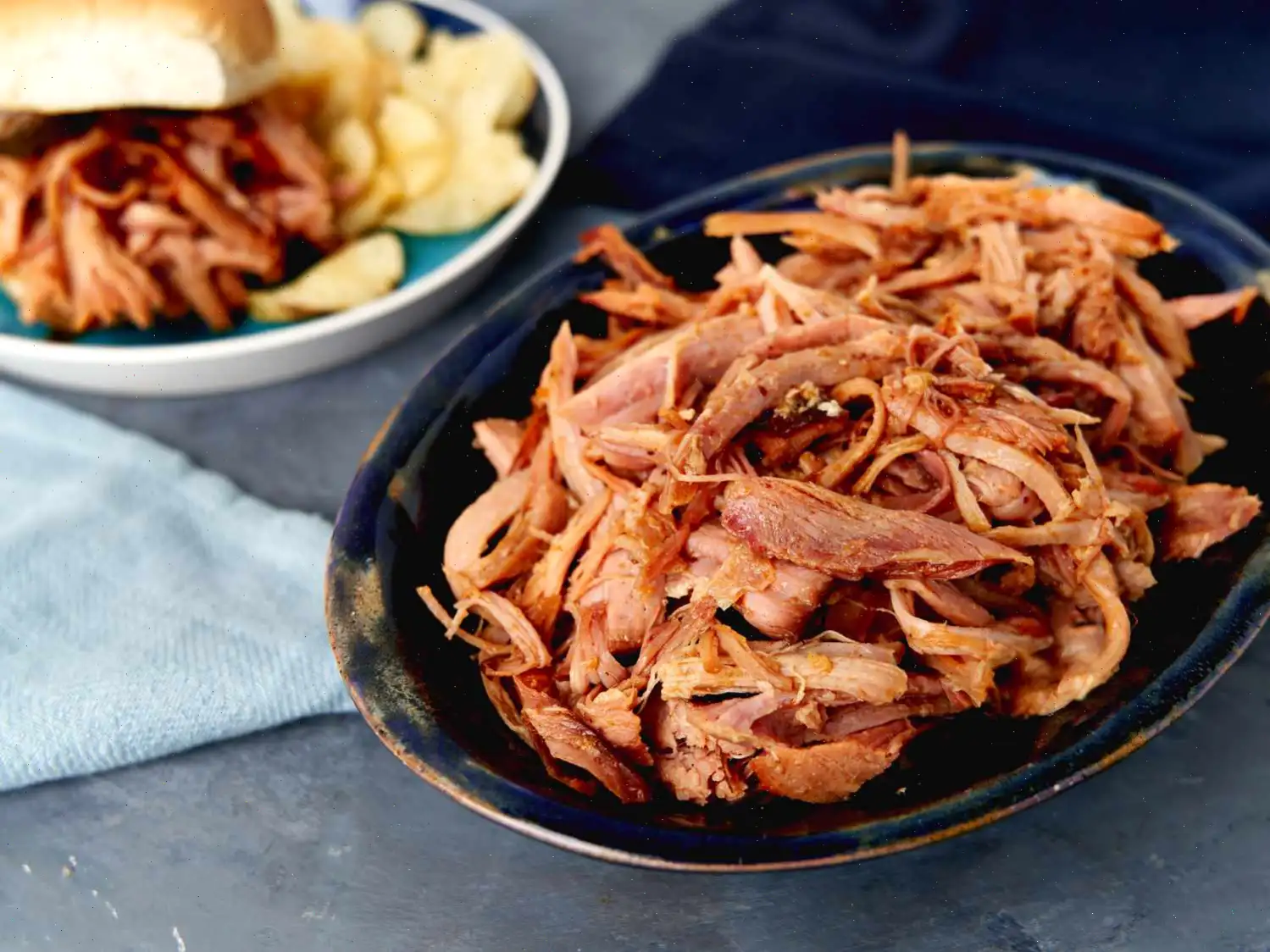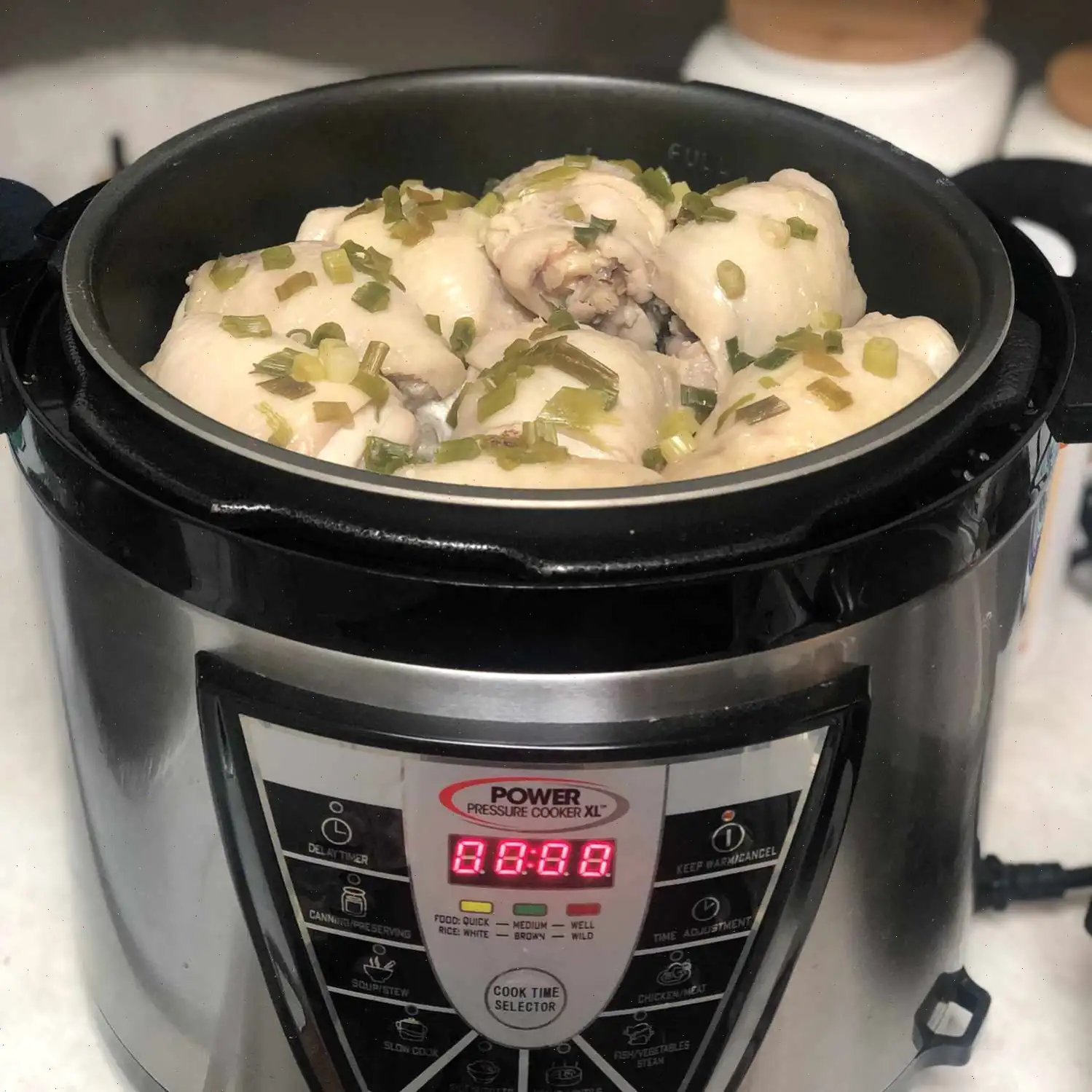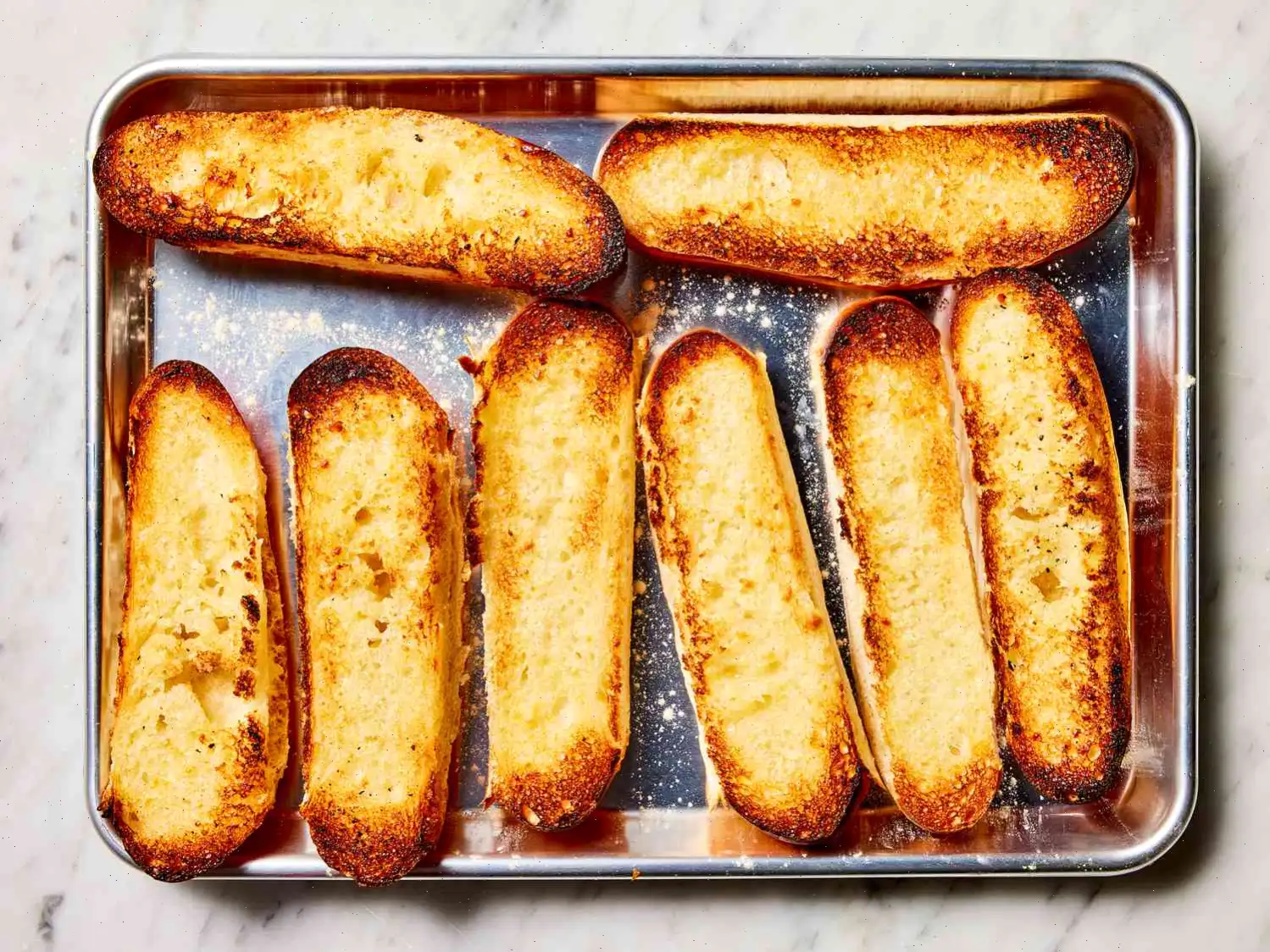
Homemade Manti (Traditional Turkish Dumplings) Recipe
Ingredients
This recipe was developed at its original yield. Ingredient amounts are automatically adjusted, but cooking times and steps remain unchanged. Note that not all recipes scale perfectly. Original recipe (1X) yields 4 servings.
Dough:
- 2 cups all-purpose flour, plus more for dusting
- teaspoon salt
- 2 large eggs
- teaspoon water, or as needed
Filling:
- 2 onions, peeled
- pound ground beef
- Salt and pepper to taste
Red Pepper Oil:
- 3 tablespoons vegetable oil
- 1 tablespoon red pepper flakes
Yogurt Sauce:
- 1 (8 ounce) plain yogurt
- 1 tablespoon minced garlic
Directions
Step 1: Make the dough. Combine flour and salt in a large bowl. Add eggs and water, mixing well with your hands. Gradually add more water, if needed, to form a soft dough. Cover and set aside for at least 30 minutes.
Step 2: Make the filling. Shred the onions and place them in a colander or sieve over a bowl to drain and discard any juice. In a medium bowl, combine the drained onions, ground beef, salt, and pepper. Mix well with a spoon until the mixture becomes a smooth, mashed filling. Set the filling aside.
Step 3: Prepare the dough. Lightly flour a work surface and a large plate. Divide the dough into two halves. Working with one half at a time, roll out the dough on the floured surface into a rectangle as thin as possible. Use a knife or pastry wheel to cut the dough into 2-inch squares.
Step 4: Assemble the manti. Place about 2 teaspoons of the filling in the center of each dough square. Carefully gather the edges of the dough and pinch them together at the top to form a small bundle. Place the prepared manti on the floured plate, sprinkling more flour on top to prevent sticking.
Step 5: Make the red pepper oil. In a small skillet, heat the vegetable oil and red pepper flakes over low heat just until the pepper flakes begin to color the oil. Remove from heat and set aside to keep warm.
Step 6: Make the yogurt sauce. In a small bowl, stir together the yogurt and minced garlic. Set the sauce aside for later use.
Step 7: Cook the manti. Bring a large pot of salted water to a boil over medium-high heat. Carefully drop the manti into the boiling water and cook for 20 to 25 minutes, or until the filling is no longer pink and the dough is tender. Drain well.
Step 8: Serve the manti. Divide the cooked manti among four plates. Spoon the yogurt sauce over the manti and drizzle with the prepared red pepper oil.
Recipe Tip
You can use ground lamb or other ground meat instead of beef if you prefer.
Nutrition Facts (per serving)
- Calories: 560
- Total Fat: 23g (30% DV)
- Saturated Fat: 7g (33% DV)
- Cholesterol: 120mg (40% DV)
- Sodium: 440mg (19% DV)
- Total Carbohydrate: 64g (23% DV)
- Dietary Fiber: 4g (15% DV)
- Total Sugars: 9g
- Protein: 23g (46% DV)
- Vitamin C: 11mg (12% DV)
- Calcium: 163mg (13% DV)
- Iron: 5mg (27% DV)
- Potassium: 566mg (12% DV)
* Percent Daily Values are based on a 2,000 calorie diet. Your daily values may be higher or lower depending on your calorie needs.
** Nutrient information is not available for all ingredients. Amount is based on available nutrient data.
If you are following a medically restrictive diet, please consult your doctor or registered dietitian before preparing this recipe for personal consumption.
This recipe for Homemade Manti is a classic Turkish dish that features tender dumplings filled with seasoned ground meat and served with a flavorful yogurt sauce and a drizzle of pepper oil. Its a comforting and delicious meal that has become a staple in Turkish cuisine.
Origin of Manti
The origin of manti is often debated, as it has deep roots in Central Asia. Some historians believe it was brought to Turkey by the Mongol Empire, while others trace its roots back to the Turkic peoples of the Altai Mountains. The dish spread across the region, with each country adopting its own variations. Manti in Turkey is typically served with yogurt and a spiced butter sauce, a combination that has become a signature of the dish in Turkish homes and restaurants.
Regional Variations
In Turkey, manti is beloved nationwide, but its preparation and presentation vary from region to region. The most famous variant is from Kayseri, a city in central Turkey, known for making manti that are particularly small and delicately prepared. In contrast, some regions prepare larger manti or even steam them rather than boiling. In Central Asia, manti are often stuffed with a mixture of lamb or pumpkin, and they are sometimes steamed, making for a juicier and softer texture. Despite these variations, the essence of mantia dumpling filled with meat and served with yogurtis consistent throughout the region.
Differences from Similar Dishes
While manti shares similarities with other dumpling dishes found across Central Asia and the Middle East, such as ravioli or pierogi, the key difference lies in the filling and the method of serving. Unlike ravioli, which typically has a simple pasta filling, manti uses ground meat (often beef or lamb) mixed with finely shredded onions, giving it a rich flavor. Additionally, the Turkish version of manti is distinct because it is traditionally served with a tangy yogurt sauce and a spiced red pepper oil, which adds a unique taste that sets it apart from other dumpling varieties. Furthermore, manti are often smaller and more delicate than other dumplings, which gives them a special texture and bite.
Where Manti is Typically Served
Manti is a beloved dish across Turkey and is typically served as a main course during family gatherings, special occasions, and festive meals. It is also commonly found in Turkish restaurants both in Turkey and around the world. Outside of Turkey, manti is popular in regions of the Caucasus, Central Asia, and parts of the Middle East. It is often enjoyed in the company of friends and family, making it a dish that brings people together. Whether at a wedding, a family dinner, or a holiday celebration, manti holds a special place in Turkish culinary tradition.
Fun Facts about Manti
- In the Turkish city of Kayseri, manti is considered a culinary art form, and the locals pride themselves on making the tiniest manti possiblesometimes as small as a fingernail!
- Traditionally, making manti is a labor-intensive task that requires patience and skill. Its often made by several family members working together to prepare the dough, make the filling, and shape the dumplings.
- In some variations, the filling can include vegetables like pumpkin or spinach, and some families even add yogurt directly to the filling for an extra creamy texture.
- Manti has also made its way into popular Turkish street food culture, where it is served in smaller, bite-sized portions with different types of sauces and toppings, such as spicy tomato sauce or even sumac.
FAQ about Homemade Manti (Traditional Turkish Dumplings) Recipe
Comments
Pamela Davis
04/18/2025 07:41:23 PM
"Absolutely scrumptious, definitely worth a try!"
Rebecca Baker
05/03/2025 02:18:10 PM
I have been making these dumplings for years. My family fills them with a mixture of mashed potatoes and cheese, avoiding the use of milk or butter. We also make a cabbage filling, and once boiled with butter and onions, they are delicious. However, I wasn't a big fan of the sauce - it was just okay.








